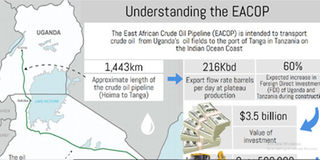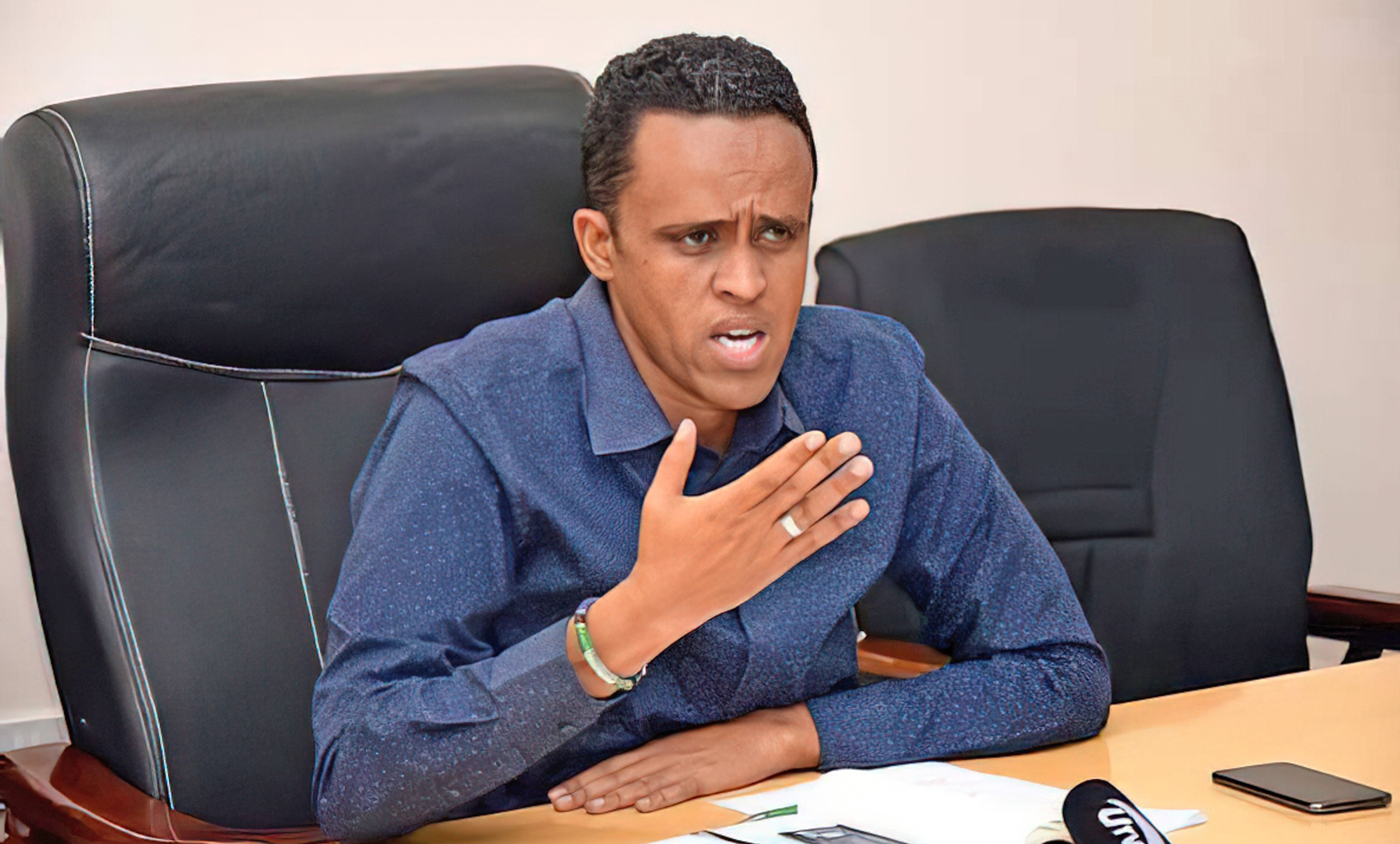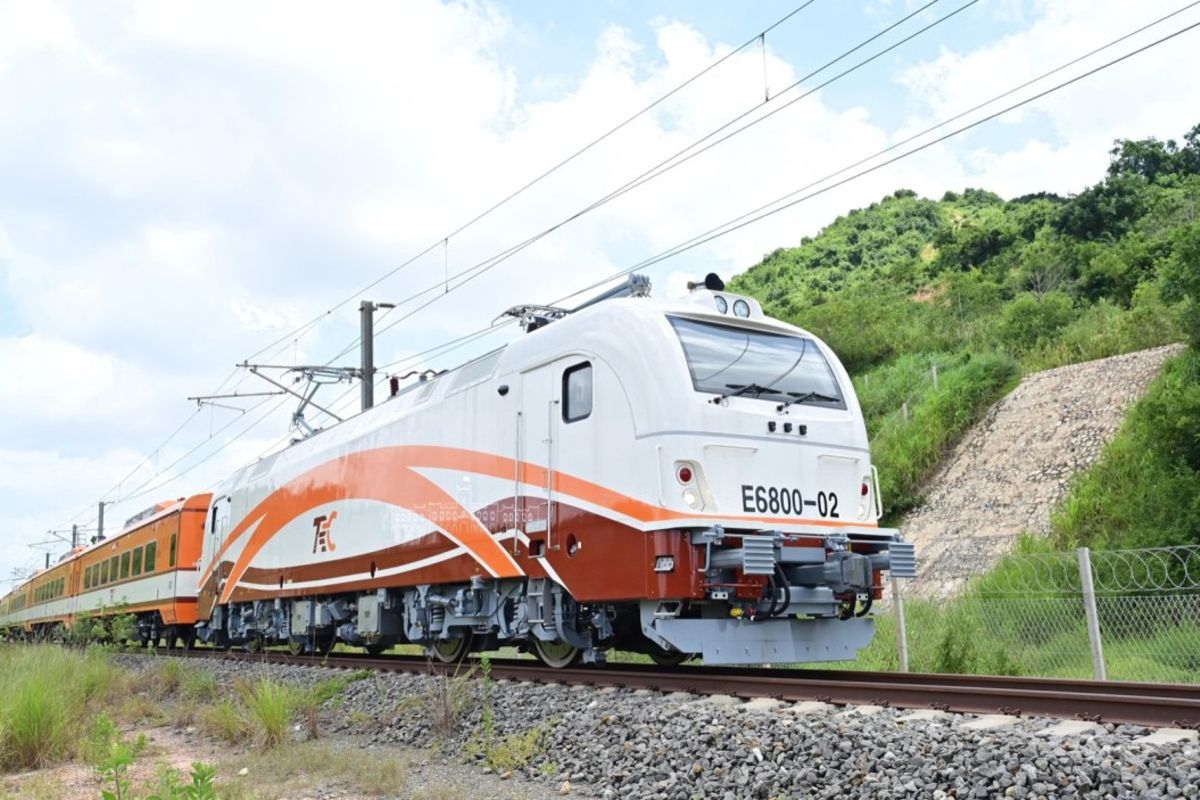What the crude oil pipeline means to Tanzania

What you need to know:
- The $3.5 billion pipeline will transport crude oil from Hoima in Uganda to Tanga port in Tanzania.
Dar es Salaam. Tanzanian authorities have one month in which to conclude and sign the Host Government Agreement (HGA) with upstream firms involved in the East African Crude Oil Pipeline (EACOP). The country expects billions of dollars from the joint project with Uganda.
The upstream firms include Total, CNOOC and UNOC.
This is what those involved in the HGA in Tanzania have been told, according to EACOP’s National Coordinator in Tanzania, Mr Salum Mnuna.
The $3.5 billion pipeline will transport crude oil from Hoima in Uganda to Tanga port in Tanzania.
The directive to have the HGA signed within a month comes after President John Magufuli and Uganda President Yoweri Museveni met on Monday, September 14 and signed an intergovernmental agreement (IGA) to fast-track the requisite legal and commercial agreements.
It also comes after the signing of an HGA by Uganda.
Completion of the HGA and the existing legal procedures would pave the way for a Final Investment Decision (FID), expected by the end of this year.
The two Presidents agreed that each nation commences negotiations on all pending project issues immediately.
“The directive has been issued after the signing of the IGA this week,” revealed Mr Mnuna.
So far, Tanzania has completed the Environmental and Social Impact Assessment (ESIA) for the project, among other prerequisites.
Referring to the financial gains that Tanzania will get from the pipeline project, Mr Mnuna said the country would earn $1 billion a year (about Sh2.3 trillion) as income tax for the next 25 years.
The revenues will be generated on the start of the pipeline operations, whereby Tanzania will earn 60 percent of the paid tax - with Uganda pocketing 40 percent.
“There will be other financial gains that we will get from the project - apart from tax,” Mr Mnuna revealed.
He also disclosed that the Tanzanian authorities had granted the oil companies a VAT exemption on imported construction equipment like heavy machineries in order to facilitate construction of the pipeline which will have the capacity to transport 216Kbd: that is some 216,000 barrels of oil per day.
He added that contracted Ugandan shippers will pay $12.77 per barrel to EACOP Company for transporting crude oil from the production site to international markets.
As it stands in terms of the share-holding structure for the oil project, the up-streamers include Total Oil (66.7 percent after acquiring Tullow’s 33.3 share) and the China National Offshore Oil Corporation (CNOOC), with 33.3 percent shares. However, the Uganda National Oil Company (UNOC) will soon join the upstream stakeholders, holding 15 percent, Total oil stated.
During the construction phase, the 1,445km-long pipeline will create employment in the form of thousands of jobs throughout the pipeline’s route - and will unlock East Africa’s potential as it will result to over 60 percent increase in Foreign Direct Investments (FDIs) in Uganda and Tanzania.
During his recent visit to Chato in Tanzania, Uganda President Museveni said the project is set to exploit 6.5 billion barrels of oil. This is only 40 percent of the estimated deposits that has been discovered in the Albertine oil zone.
He further revealed that there had been lengthy debate and negotiations between Uganda and other stakeholders on the amount of tax and other expenses - processes which delayed commencement of the project for years.
For his part, President Magufuli revealed that the oil pipeline project will create more than 15,000 jobs for Tanzanians. Also he expressed optimism that the project’s implementation will open up the region for further trading opportunities - which would, in turn, fast-track socioeconomic development in the region.
The oil pipeline will start in the Buseruka sub-county, Hoima District, to Tanga. Tanzania hosts 1,115km of the pipeline (80 percent) with the remaining 330km being in Uganda.



